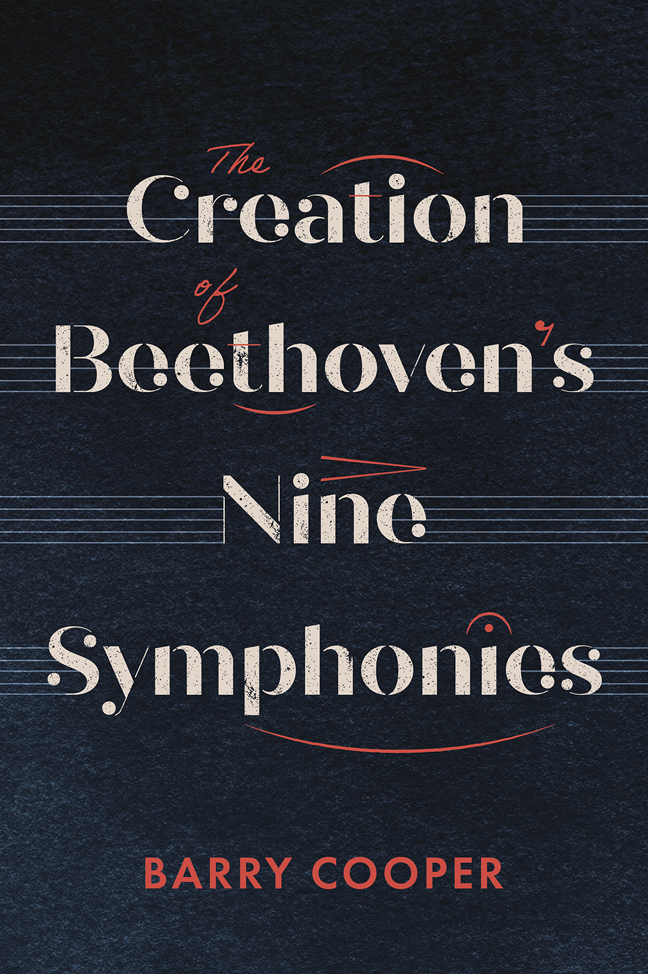Book contents
- Frontmatter
- Contents
- List of music examples
- List of tables and figures
- Preface and acknowledgements
- Abbreviations
- Introduction
- 1 The Long and Hazardous Road to the First Symphony, Op. 21
- 2 A Creation in Two Parts: The Second Symphony, Op. 36
- 3 Elevating the Genre: The Third Symphony (Eroica), Op. 55
- 4 The Oppersdorff Connection: The Fourth Symphony, Op. 60
- 5 Motivic Intensity: The Fifth Symphony, Op. 67
- 6 ‘More an Expression of Feeling than Painting’: The Sixth Symphony (Pastoral), Op. 68
- 7 ‘Great, Exalted’ Work: The Seventh Symphony, Op. 92
- 8 ‘Just Because it is Much Better’: The Eighth Symphony, Op. 93
- 9 The Philharmonic Connection: The Ninth Symphony, Op. 125
- 10 Epilogue
- Bibliography
- Index of Music Manuscripts
- Index of Beethoven’s Works
- General Index
5 - Motivic Intensity: The Fifth Symphony, Op. 67
Published online by Cambridge University Press: 02 March 2024
- Frontmatter
- Contents
- List of music examples
- List of tables and figures
- Preface and acknowledgements
- Abbreviations
- Introduction
- 1 The Long and Hazardous Road to the First Symphony, Op. 21
- 2 A Creation in Two Parts: The Second Symphony, Op. 36
- 3 Elevating the Genre: The Third Symphony (Eroica), Op. 55
- 4 The Oppersdorff Connection: The Fourth Symphony, Op. 60
- 5 Motivic Intensity: The Fifth Symphony, Op. 67
- 6 ‘More an Expression of Feeling than Painting’: The Sixth Symphony (Pastoral), Op. 68
- 7 ‘Great, Exalted’ Work: The Seventh Symphony, Op. 92
- 8 ‘Just Because it is Much Better’: The Eighth Symphony, Op. 93
- 9 The Philharmonic Connection: The Ninth Symphony, Op. 125
- 10 Epilogue
- Bibliography
- Index of Music Manuscripts
- Index of Beethoven’s Works
- General Index
Summary
Allegro con brio
Andante con moto
Allegro –
Allegro
C minor
Beethoven had a particular fascination for the key of C minor, which he used far more often than any other minor key. It was the key of his first published composition (the Dressler Variations, WoO 63, of 1782), the key of his final piano sonata (Op. 111 of 1822), and a key that reappears right up to his very last page of sketches in 1827 (Bsb, Autograph 10/2, f. 6r). It was also the key of his earliest known sketch for a symphony (Hess 298; see Chapter 1), written around 1788. Although this sketch was abandoned, the key must have remained at the back of his mind for a possible symphony, finally re-emerging in spring 1804, when he made his earliest sketches for the Fifth Symphony. At this date his Eroica Symphony, with its colossal funeral march in C minor as second movement, was still unperformed, although Ries had heard a version on the piano (see Chapter 3). When Beethoven embarked on his new C minor symphony he seems to have planned another symphony that would similarly shock the musical world and push the boundaries of symphonic writing to new limits, for the famous opening motif, utterly unconventional for the start of a symphony, was present from the outset (see below). Schindler’s claim that the motif represents Fate knocking at the door, however, is surely fictional, like so many of his similar anecdotes. Czerny’s claim that Beethoven derived the motif from the call of the yellowhammer, which consists of a series of repeated notes (not necessarily three) followed by a longer one of different pitch, is only slightly more plausible.
Many of Beethoven’s works in C minor conclude in C major, including the Dressler Variations and the Sonata Op. 111 mentioned above, as well as his Third Piano Concerto and some quite minor works such as his folksong setting ‘The Miller of Dee’, where the change has poetic implications, as it does also in his Choral Fantasia. Even where a C minor work does not end in C major, the latter key usually appears at some point, as in the second movement of the Eroica Symphony.
- Type
- Chapter
- Information
- The Creation of Beethoven's Nine Symphonies , pp. 111 - 141Publisher: Boydell & BrewerPrint publication year: 2024



